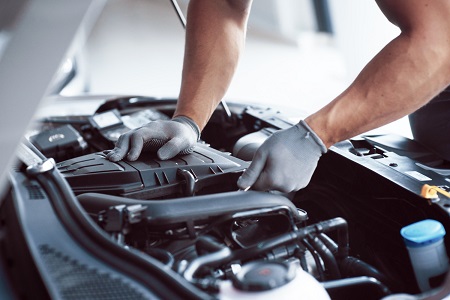5 secrets for successful structural repairs
 Structural damage to the vehicle can compromise the safety of the passengers, and it is imperative to get it checked immediately. But what happens in a car repair shop when you take the vehicle for structural repair? We are an auto body repair shop, and we can assure the best structural repairs in the Campbell area. We want to share how we get your car back in shape.
Structural damage to the vehicle can compromise the safety of the passengers, and it is imperative to get it checked immediately. But what happens in a car repair shop when you take the vehicle for structural repair? We are an auto body repair shop, and we can assure the best structural repairs in the Campbell area. We want to share how we get your car back in shape.
Structural repair: The process involved
In the past, auto body repair mainly consisted of using brute force to pull the parts in place and hoping it worked. But today, we have advanced technologies that can help identify and repair problems. Here is the 5-step process of doing successful structural repairs.
- Identification and analysis of the problem
- Holding
- Blocking
- Pressure monitoring
- Stress relieving
1. Identification and analysis of the problem
This is the most crucial step of a successful structural repair. If the technician starts to pull without analyzing the problem, he might easily miss the secondary damage if present. Hence the technician first takes the time to thoroughly examine the issue and find the areas of possible damage.
The manufacturer's auto body repair information in CDs, manuals, and more can help the technician understand your vehicle better. There are structural components that shouldn't be repaired but replaced when damaged. Hence knowing the rules can help the auto body repair technician make a better choice.
2. Holding
The vehicle must be appropriately anchored for the repair to be done effectively. The anchored area should be secure enough to hold the car in its place even when pulling force is applied. The proper clamps and fixtures can ensure secure anchoring for the vehicle while the repair work is done.
Also, a common type of holding fixture called a turnbuckle is used to keep an area in place after it is repaired back to its original dimension. This turnbuckle will prevent the area from stretching past its proper position while the repair work continues.
3. Blocking
Blocking involves using leverage to concentrate the pulling force on the area of damage. A block is usually placed under a cross member, and it helps restore datum misalignment. The primary purpose of blocking is to lessen the loss of pulling force due to the unitized structure's flexion.
4. Pressure monitoring
The force you pull the structure is essential for a successful repair job. Usually, a minimal amount of pressure is considered enough for unitized structures.
Using pulling systems with pressure gauges to monitor the force, placing on the structure, and staying below 2500 pounds usually produces desirable results.
Sometimes a damaged part might restrict the damage from moving even with adequate force. In that case, clear the primary damage before accessing the structural damage.
5. Stress relieving
You are ready to pull after safely anchoring and blocking the vehicle. But you should make sure to relieve the internal stress of the metal since skipping this step before pulling can cause the structure to crack. Using heat or vibration can help ease the pressure of the metal.
A Superior Collision Shop
We at A Superior Collision Shop follow all the safety procedures and perform the structural repairs efficiently for our customers. Visit our site to take a look at the services we provide. http://www.asuperiorshop.com/services.html.
- Jun 30, 2022
